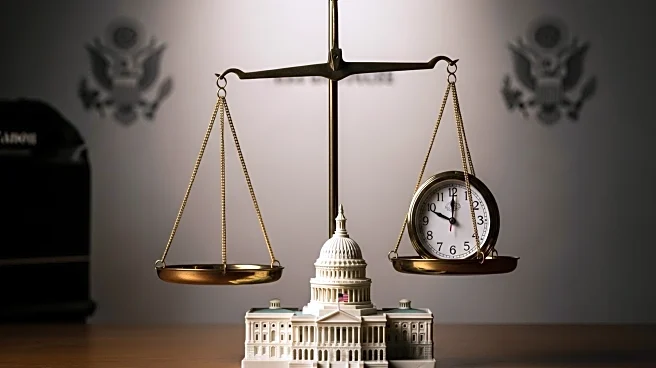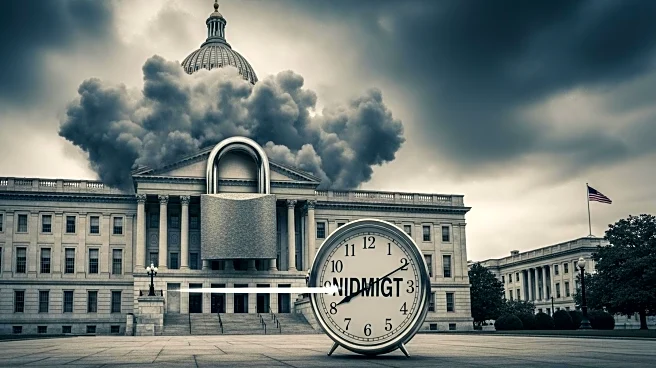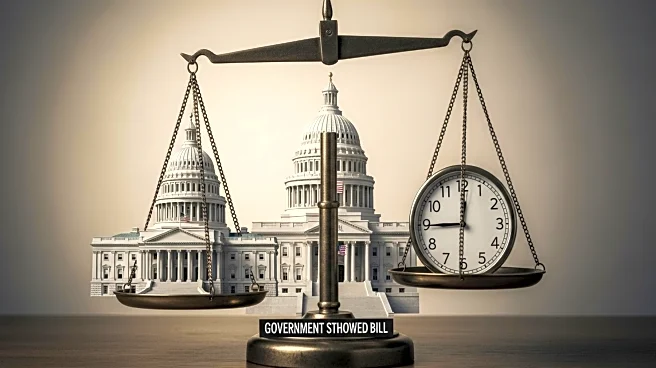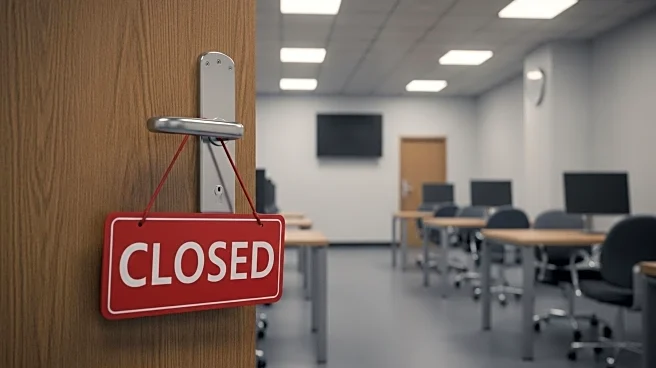What's Happening?
The ongoing government shutdown, now entering its second week, is leading to significant operational changes across federal agencies. Many agencies have been relying on carryover funds to maintain operations, but these funds are beginning to deplete. As a result, tens of thousands of federal employees are expected to receive furlough notices. The Internal Revenue Service (IRS) plans to furlough approximately 35,000 employees, nearly half of its workforce, due to the exhaustion of Inflation Reduction Act funds. Similarly, the Smithsonian Institution will close its museums and furlough nearly 3,700 employees starting next week. The Bureau of Land Management and the Census Bureau are also facing potential furloughs as their carryover funds run out. The Senate is set to vote on a House-backed bill to reopen the government, but it is unlikely to pass without sufficient support from Democrats.
Why It's Important?
The government shutdown has far-reaching implications for federal operations and employees. The furloughs will disrupt essential services and delay critical projects, such as the Census Bureau's preparations for the 2030 Census. The IRS's reduced workforce could impact tax processing and enforcement, affecting millions of taxpayers. The closure of Smithsonian museums will limit public access to cultural and educational resources. Additionally, the uncertainty surrounding employment status and delayed paychecks could lead to increased absenteeism, as seen in previous shutdowns. This situation underscores the vulnerability of federal operations to budgetary impasses and highlights the need for sustainable funding solutions.
What's Next?
If the shutdown continues, more agencies will likely face operational challenges and increased furloughs. The Senate's upcoming vote on the funding bill will be crucial in determining the shutdown's duration. If the bill fails, agencies may need to adjust their shutdown plans, potentially recalling or furloughing additional employees. The situation could also prompt discussions among lawmakers about alternative funding mechanisms to prevent future shutdowns. In the meantime, federal employees and the public will face continued uncertainty and disruption.











